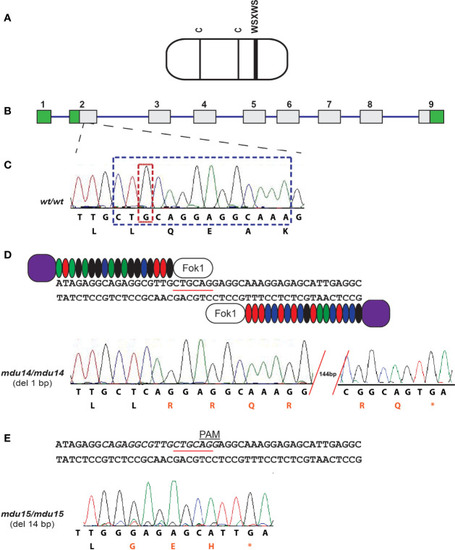
Generation of zebrafish crlf3 mutants using genome editing. (A) Schematic representation of the CRLF3 protein, consisting mostly of a cytokine receptor homology domain (rounded rectangle) containing two conserved cysteines (C, thin lines) and a WSXWS motif (thick line). (B) The intron/exon structure of the zebrafish crlf3 gene, with exons represented as numbered boxes, showing untranslated (green) and translated (gray) regions, and introns represented with intervening lines. (C) Sequence trace of homozygous wild-type crlf3wt/wt (wt/wt) and its corresponding nucleotide sequence and encoded amino acids shown below. Nucleotides deleted in mdu14 and mdu15 alleles are boxed in tan and blue, respectively. (D) Targeting of exon 2 with TALENs, with the PstI site used in RFLP analysis underlined, to generate the mdu14 allele, with the sequence of a homozygous crlf3mdu14/mdu14 (mdu14/mdu14) mutant shown. This represents a 1 bp deletion that causes a frameshift resulting in translation from an alternative reading frame (red) followed by a stop codon (*) that prematurely truncates the protein. (E) Targeting of exon 2 with CRISPR, with target site italicized and PAM site indicated, to generate the mdu15 allele, with the sequence of a homozygous crlf3mdu15/mdu15 (mdu15/mdu15) mutant shown. This 14 bp deletion also causes a frameshift and premature stop.
|

